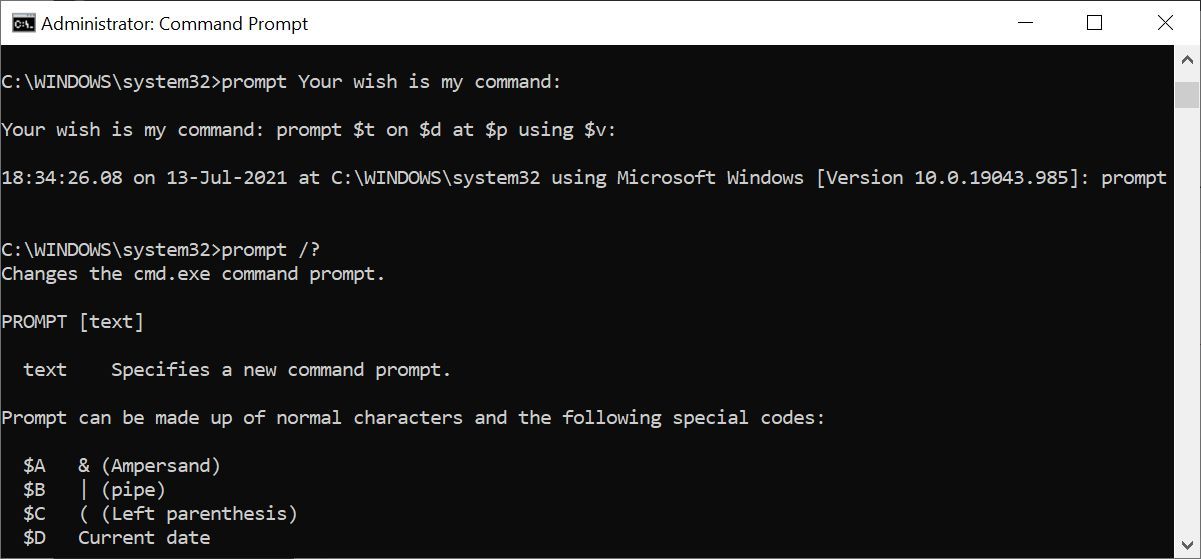

You can specify new-path in two ways: absolute or relative. It is important to take note that you need to set the current drive first (via " x:" command) before setting the current directory under the current drive. To change current working directory under the current drive, use command " cd new-path" (change directory). Take note that commands are NOT case-sensitive in CMD. D:\.> c: // Change the current drive to C. To set or change the current drive, enter the drive letter followed by a colon ( :), e.g., prompt> d: // Change the current drive to D. All relative pathnames are relative to this current drive and current working directory. Current Drive and Current Working DirectoryĮach CMD session maintains a so-called current drive and current working directory, which is shown in the prompt in the form of " drive:\path\to\current-directory>". You can enter your command after the prompt. The CMD displays a prompt which ends with a " >", in the form of " DriveLetter:\path\to\current-directory>", e.g., " C:\Windows\System>".

The pathname (or directory name) can be specified in two ways: The sub-directories are separated by " \" (back-slash). The leading " \" (back-slash) denotes the root directory for that drive. For example, in " C:\Program Files\java\jdk1.7.0_07\bin\javac.exe", the drive letter is C:, the pathname is " \Program Files\java\jdk1.7.0_07\bin\" and the filename is " javac.exe". To reference a file, you need to provide the drive letter, the directory name (aka pathname) and the filename. To view the file type, launch "File Explorer" ⇒ "View" menu ⇒ Check "File name extensions". For example, " hello.java" is displayed as " hello" with the "type" of "JAVA file".
#WINDOWS 10 COMMAND PROMPT COMMANDS PDF WINDOWS#
View File Type in Windows "File Explorer"įor programmers, it is important to SEE the file type inside the "File Explorer", which is hidden by default. Windows can associate a program to each file type. Filename and File TypeĪ Windows' filename consists of two parts: filename and file type (or file extension) separated by a dot, e.g., Hello.java, Hello.class, Test.txt, etc. Windows' file system is NOT case-sensitive, a rose is a Rose, and is a ROSE. Each drive has its own root directory, such as C:\, D:\ and E:\, where the " \" (back-slash) denote the root directory of each drive. Windows' file system is organized in drives, identified by a drive letter followed by a colon, e.g., C:, D: and E. A sub-directory may contain sub-sub-directories and files, and so on.
/cmd-commands-windows-57e599e75f9b586c35f1e965.png)
A directory may contain sub-directories and files. The directories are organized in a hierarchical tree structure, starting from the so-called root directory for EACH of the hard drive (as illustrated). In Windows, files are organized in directories (aka folders).


 0 kommentar(er)
0 kommentar(er)
